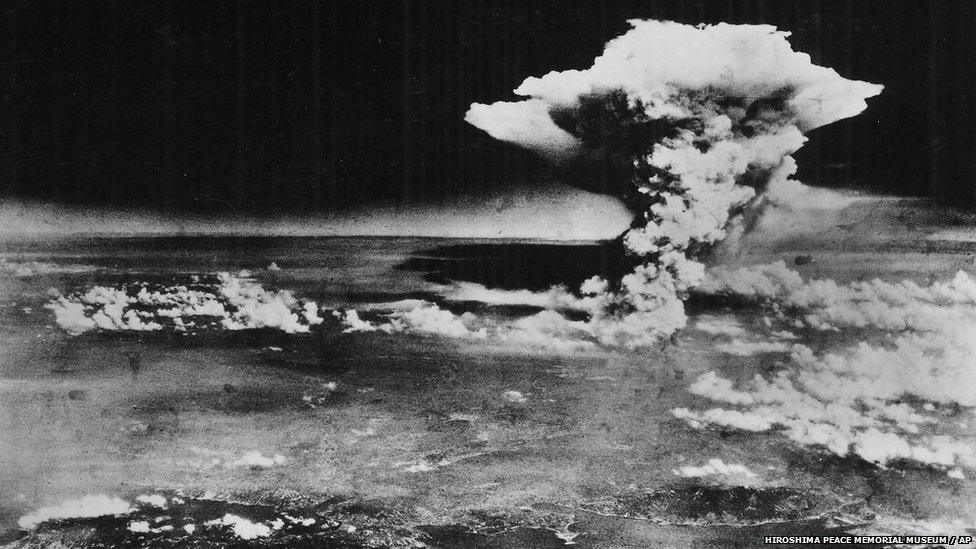In pictures: Nagasaki bombing
- Published
On 9 August 1945, the US dropped the second atomic bomb ever deployed in conflict, hitting the Japanese industrial city of Nagasaki.
Six days later, Japan announced its surrender.
At least 74,000 people died in the Nagasaki blast or from subsequent injuries. Some 140,000 people had died three days before in Hiroshima, in the world's first nuclear attack.
The bomb which would hit Nagasaki on 9 August 1945 was nicknamed Fat Man by the Americans. It was carried by the plane Bockscar, which was flown from the Mariana Islands and piloted by Maj Gen Charles Sweeney.
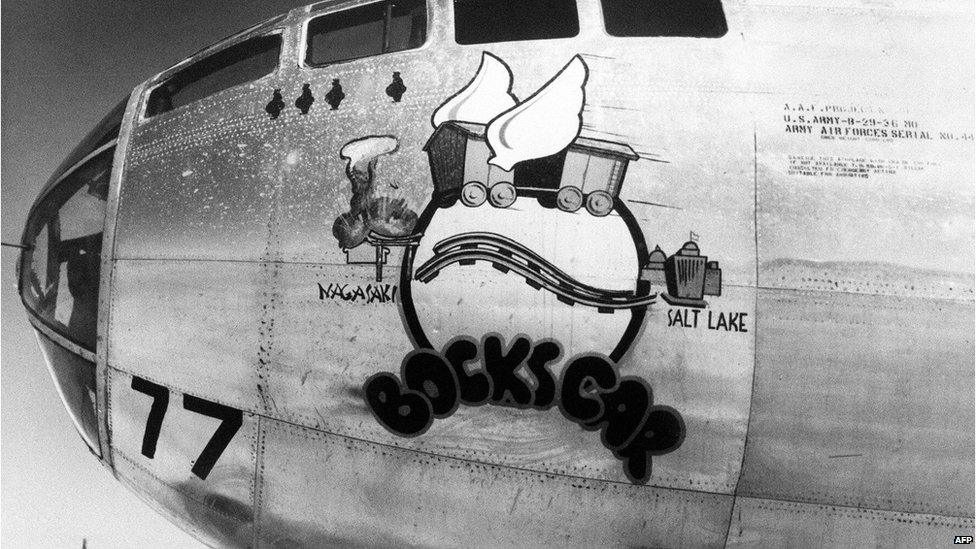
After Hiroshima, US President Harry S Truman, external said that if Japan they did not accept the terms of surrender, "they may expect a rain of ruin from the air, the like of which has never been seen on this Earth".
Nagasaki was initially not even on the list of possible targets for the A-bomb, it was only added two weeks before the attack.
On the day the US was actually intending to bomb the city of Kokura, but bad weather obscured visibility, so Bockscar headed to Nagasaki instead.
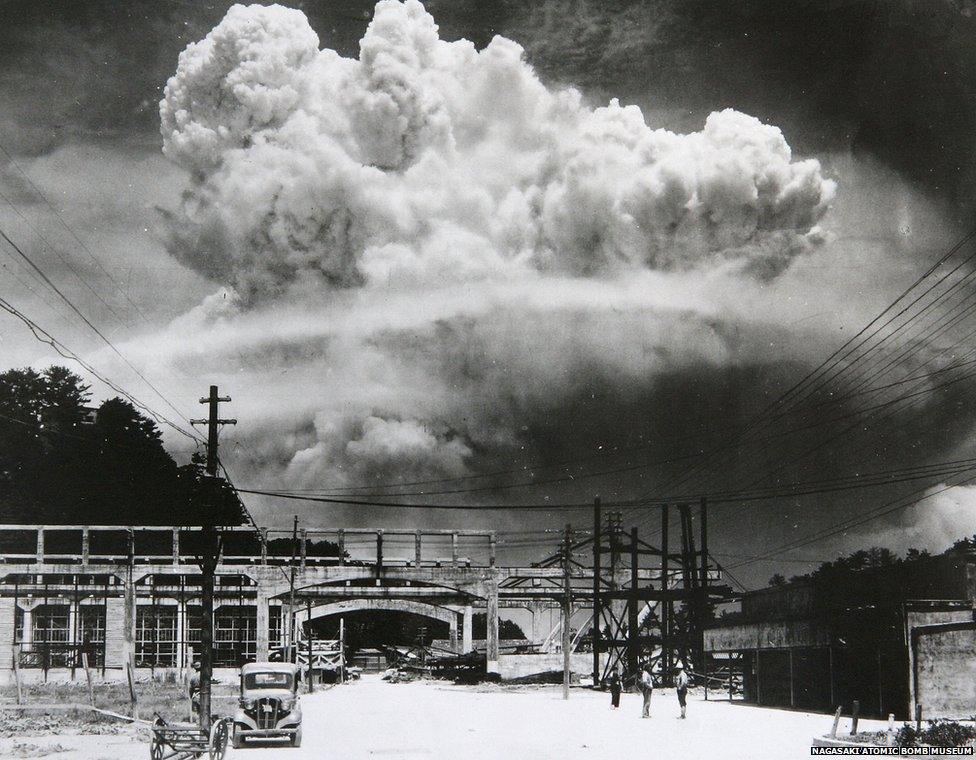
The plutonium-core bomb exploded above Nagasaki on 11.02 local time.
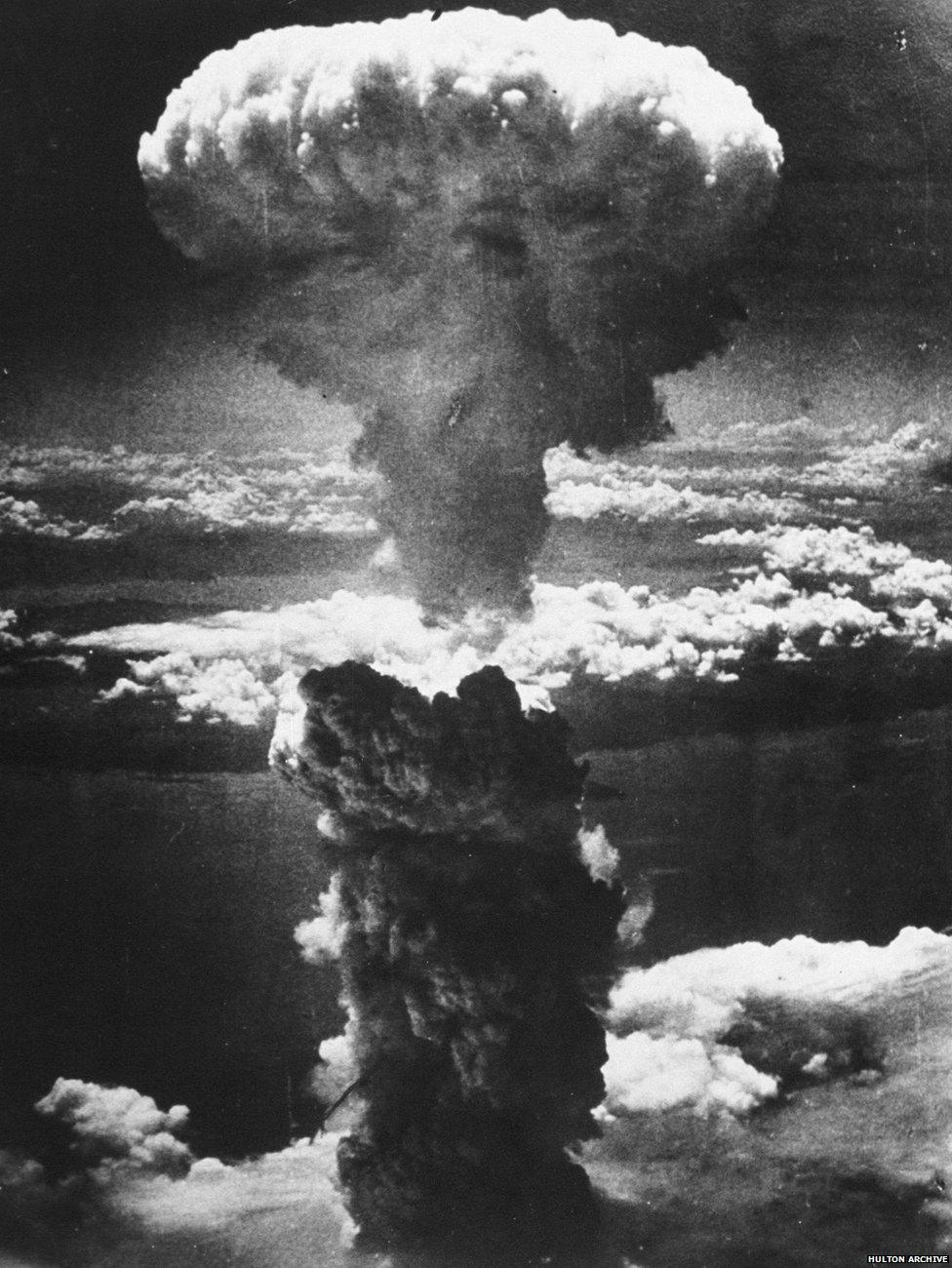
The US has justified using the atomic bomb as a necessity to end World War Two and save thousands of civilian and military lives worldwide from continued conflict. But critics say that Japan was already ready to surrender and that the US had dropped the bombs to display its military might.
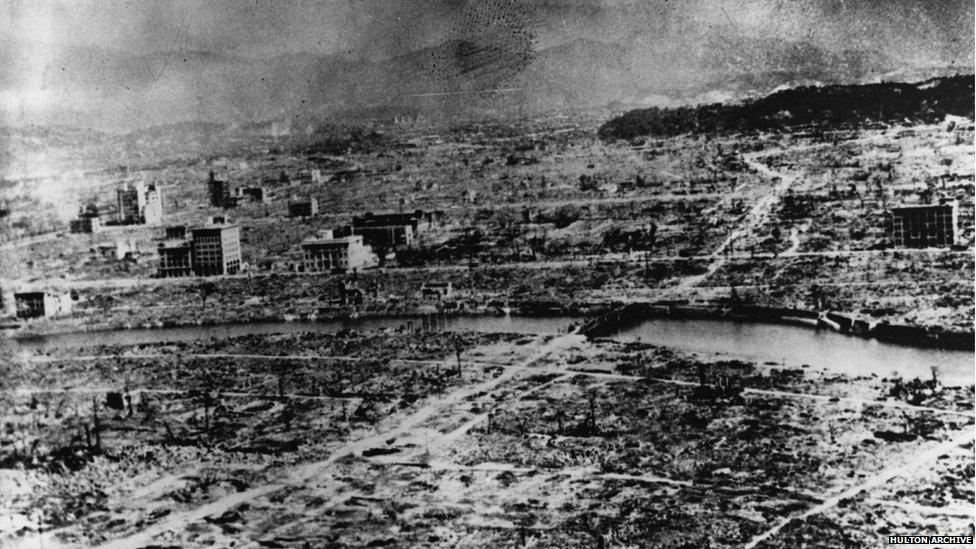
The attack on Nagasaki destroyed about 30% of the city, flattening almost everything in the industrial district.
Those who survived suffered horrific injuries, or radiation sickness.
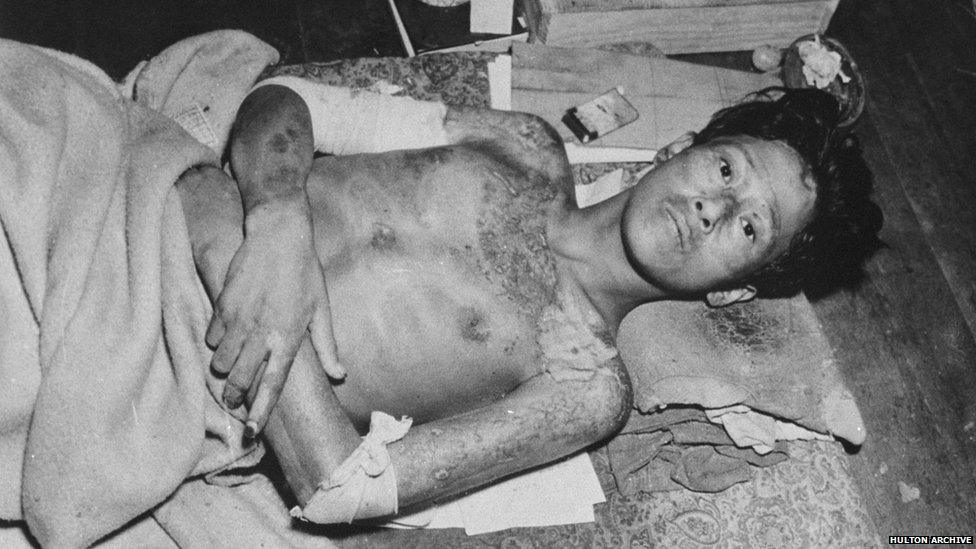
One of the biggest Roman Catholic churches in Asia at the time, the Urakami Cathedral was also hit. It was rebuilt in 1959.
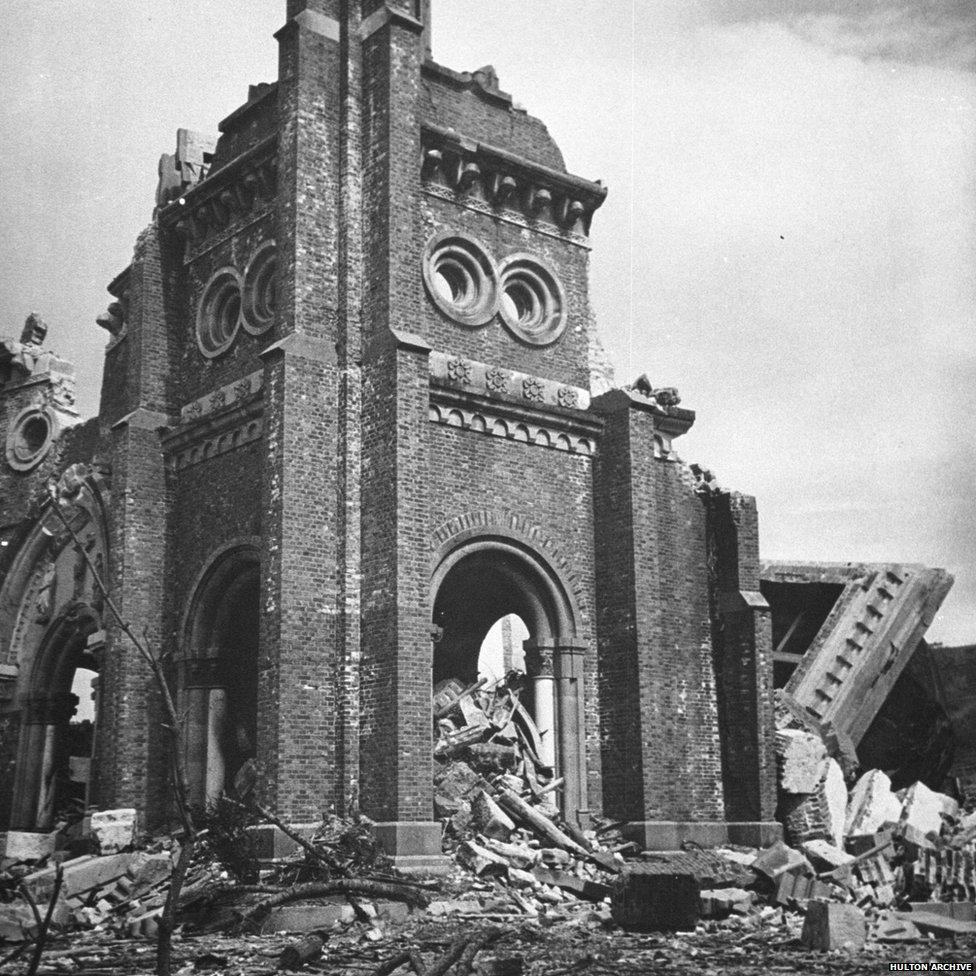
In the days following the explosion, some of the survivors were pictured living in shelters made out of debris.
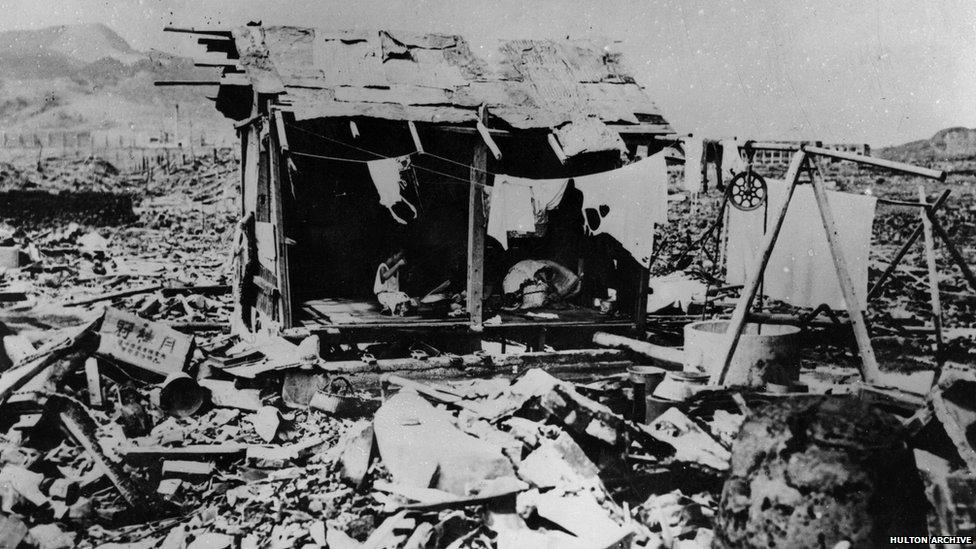
Ten years later, the city had been rapidly rebuilt, including a peace memorial park in the middle of the city.
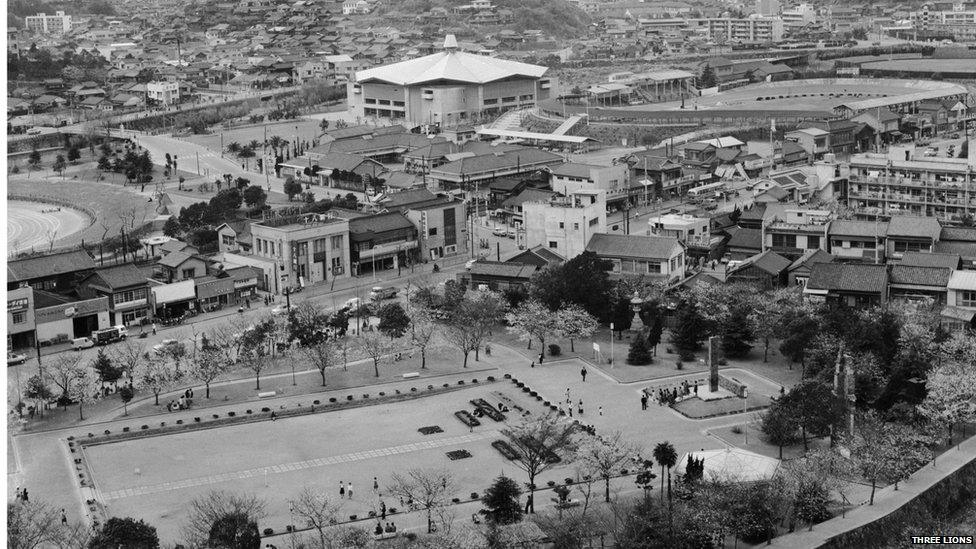
A monument was erected at the park, known as the Peace Statue in 1955. Its right hand pointing to the sky is said to "point to the threat of nuclear weapons", while its left hand extending out symbolises peace, according to Japan's national tourism agency's website., external
A memorial ceremony is held in front of it every year.
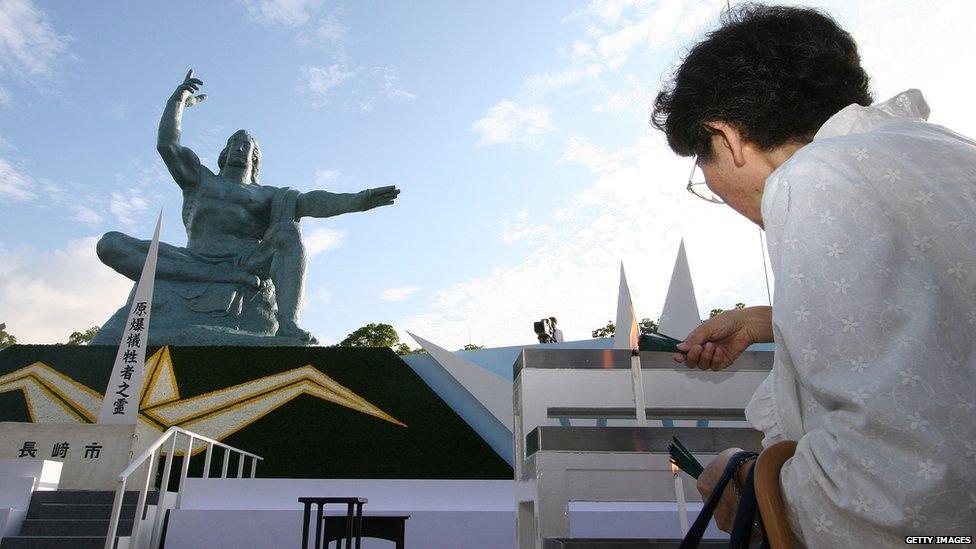
- Published6 August 2015
